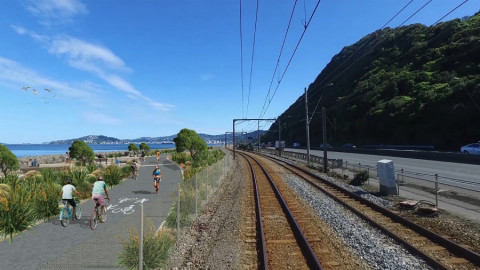
Submission in Support of Consent Application for Te Ara Tupua
August 2020
attached as PDF below
Overview
This submission strongly endorses the construction of a “seaward side” cycle path from Petone to Ngauranga.
DAST recommends that the Commissioners:
• Note the significant health benefits from increased active transport, including cycling.
• Note that these benefits will only be fully realised if there is a significant modal shift from private motor vehicles to active transport modes.
• Note that this shift is contingent on development of safe cycling infrastructure, which has recently received only a trivial proportion of transport investment in the region.
• Consent the proposed Te Ara Tupua Shared Path.
• Encourage the relevant authorities (GWRC, WCC, HCC and NZTA) to engage more actively together to maximise uptake of this critical infrastructure project.
Who is DAST?
We are a network of over 130 Wellington Hospital doctors advocating for the benefits of active transport.
In our roles as specialist doctors, we are often the ambulance at the bottom of the cliff. We daily see the debilitating and painful – often fatal - health consequences of a national that get’s far too little exercise.
We aim to promote the health benefits of active transport for all Wellingtonians and want to help people make healthy choices.
The place of Active Transport in our Regional Planning
As commissioners, you can build a fence at the top of the cliff – by leading a paradigm shift from a transport infrastructure focused on private motor vehicles to one which facilitates and promotes active transport.
The recent past has seen a vast investment in infrastructure focused on private motor vehicles, with greater than $1.5 billion committed to motorway and roading projects in recent years.
Despite good intentions, provision for active transport is glacial in terms of progress and consumes a tiny fraction of the budget.
The Hutt Valley to Wellington Cycle Corridor – a pivotal link in the regions cycle infrastructure - was in 2nd place in the regional land transport plan in 2012. If these decisions had not languished, it would have been built by now and many lives would have been saved from premature mortality.
For the sake of the health of the people of our region, and that we care for, this must change.
| Attachment | Size |
|---|---|
| 369.58 KB |

Comments
Do your research at Google
Do your research at Google